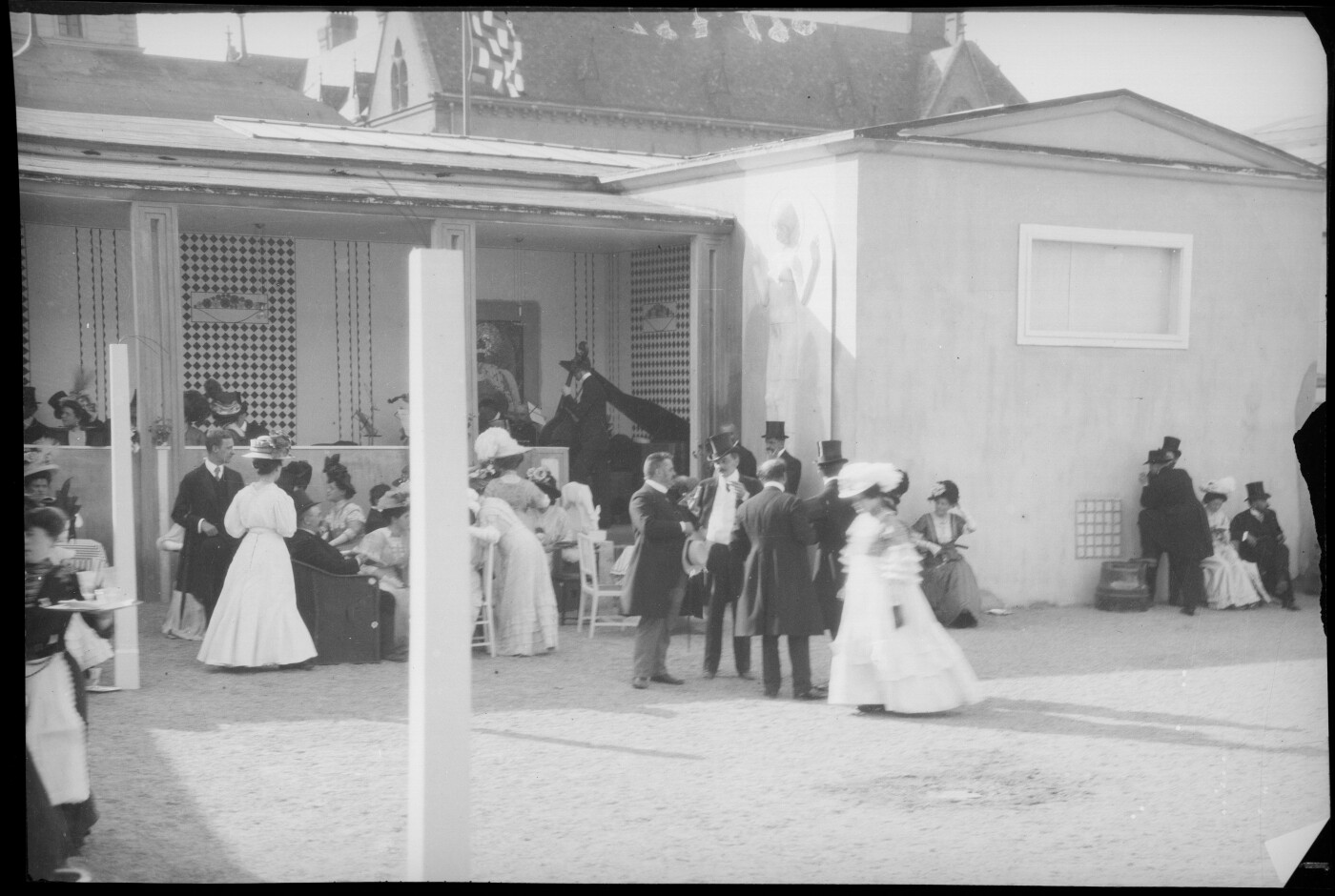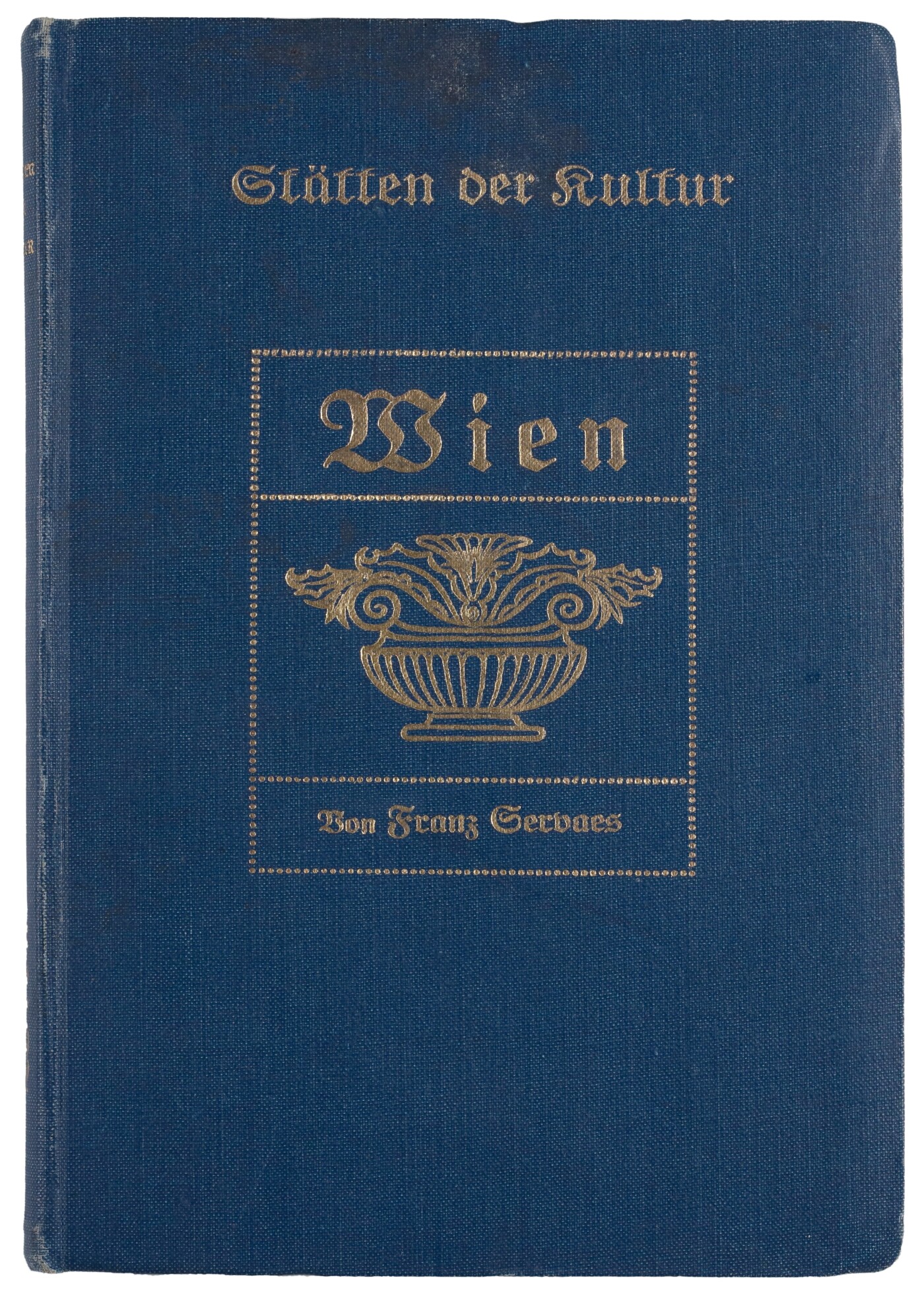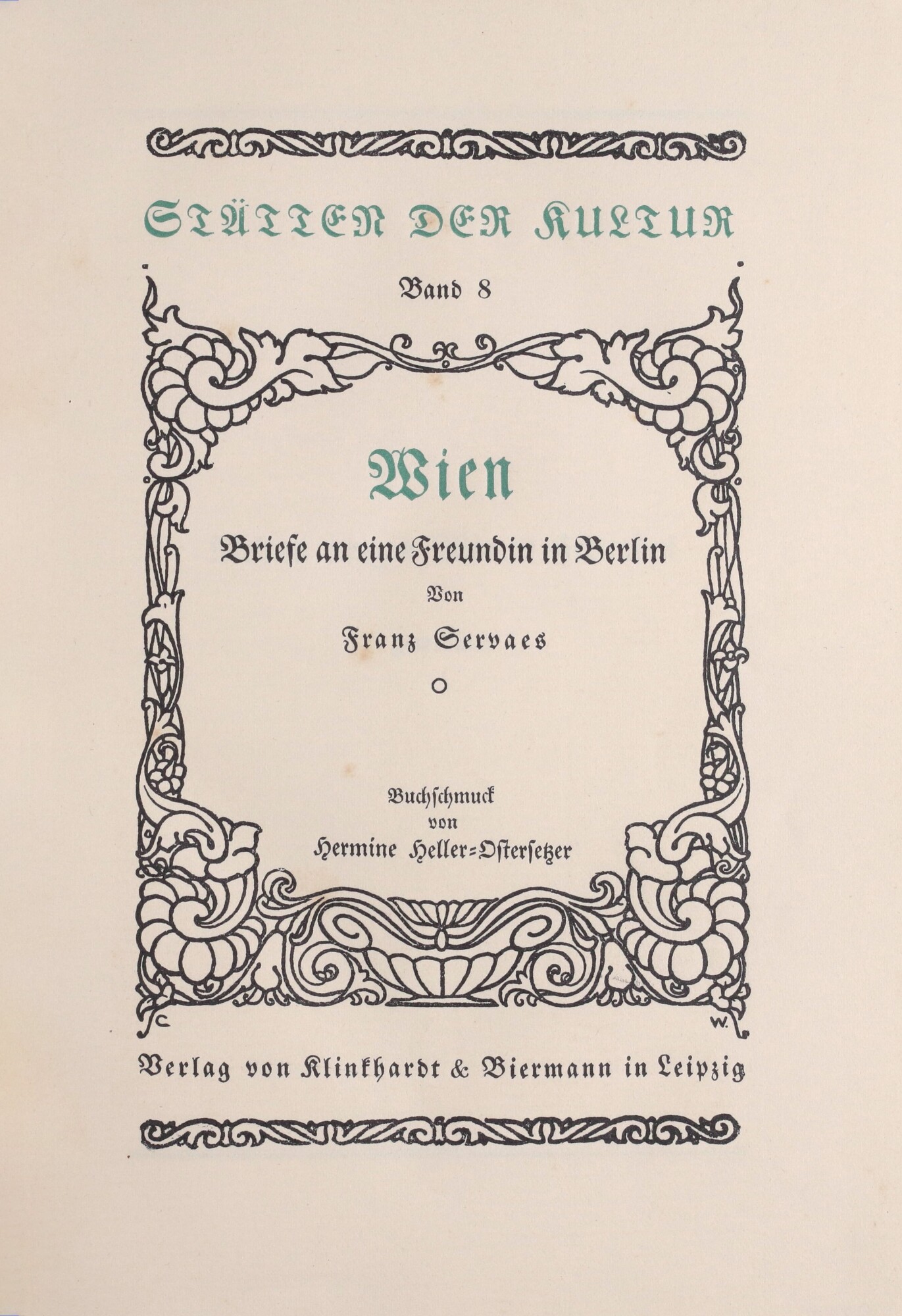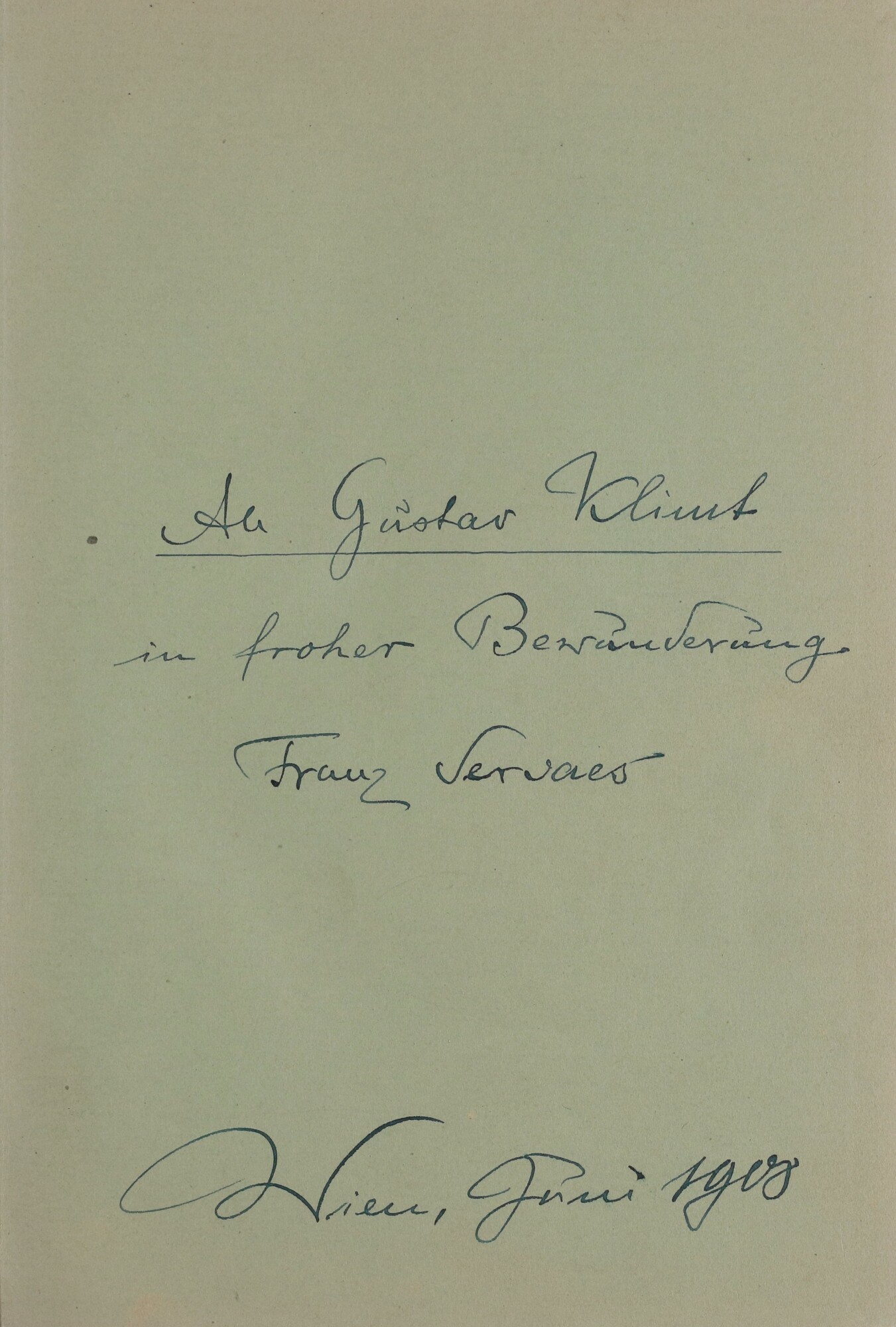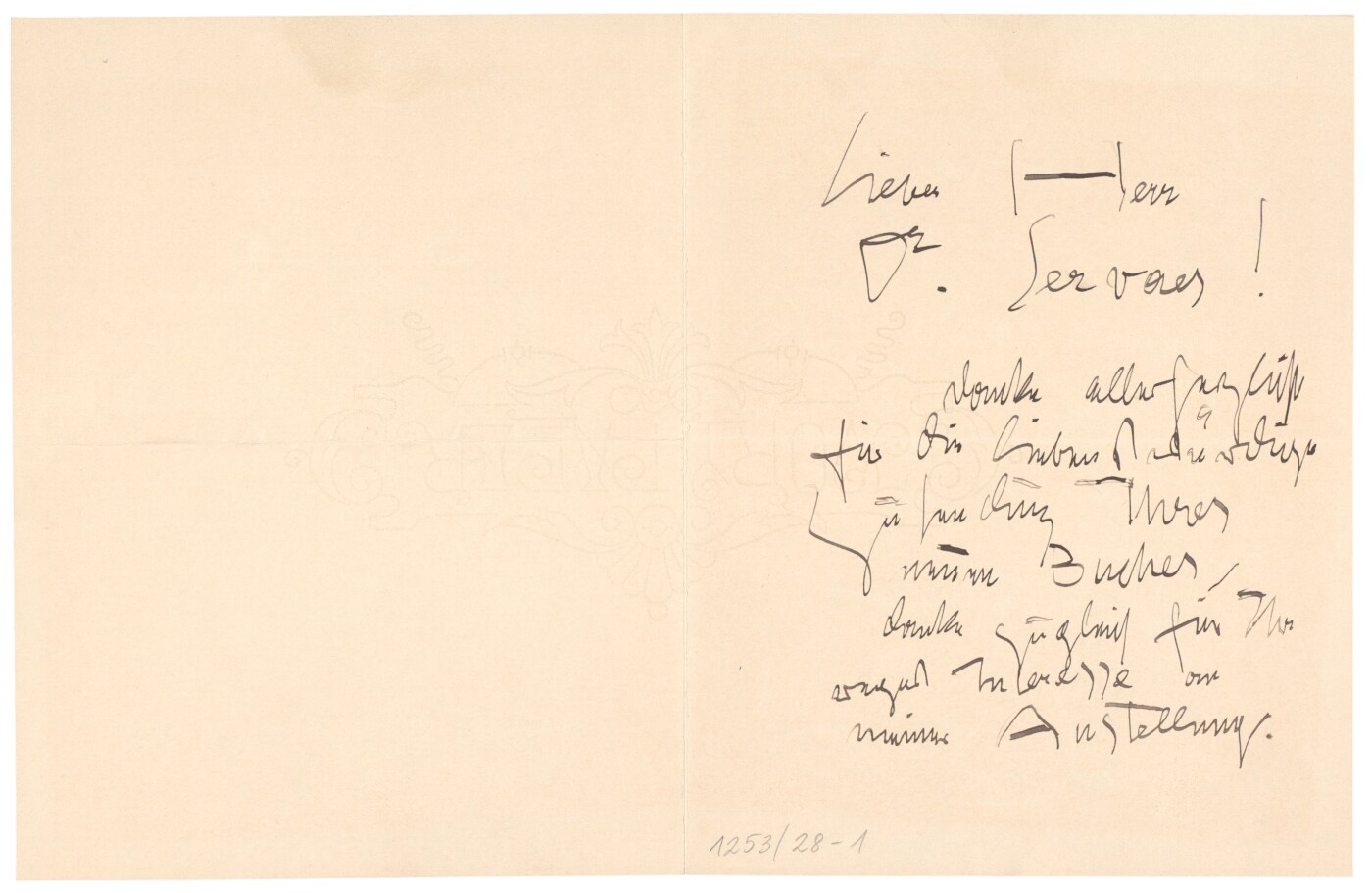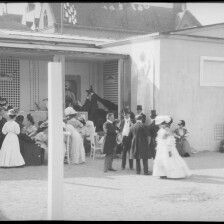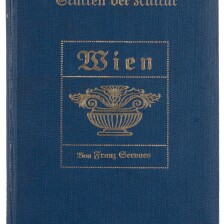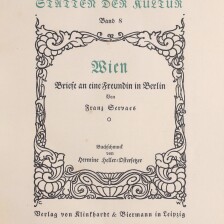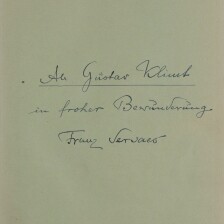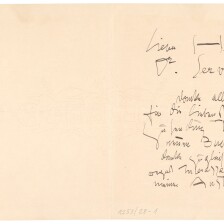Franz Servaes
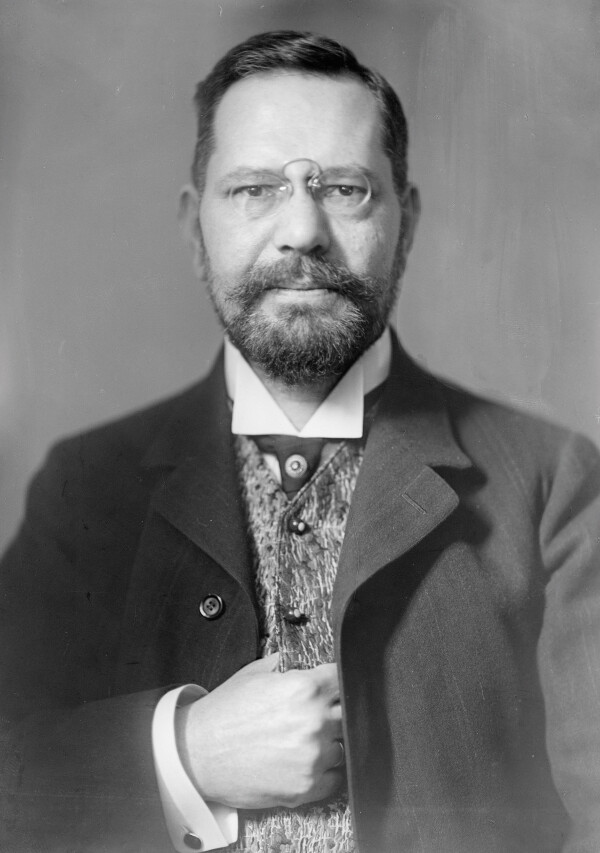
Franz Servaes photographed by Madame d'Ora, 1908
© Picture Archives and Graphics Department, Austrian National Library
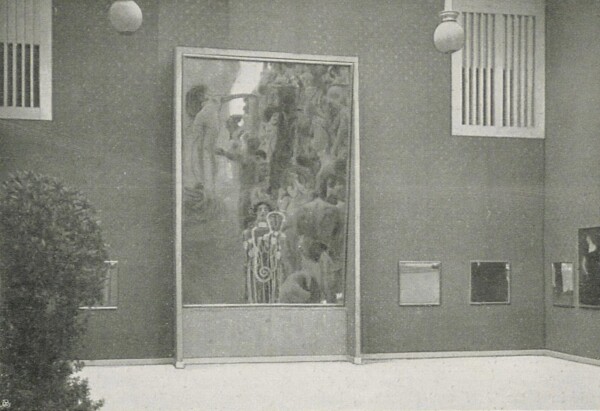
Insight into the Xth Secession Exhibition, March 1901 - May 1901, in: Die Kunst für Alle. Malerei, Plastik, Graphik, Architektur, 16. Jg. (1900/01).
© Heidelberg University Library
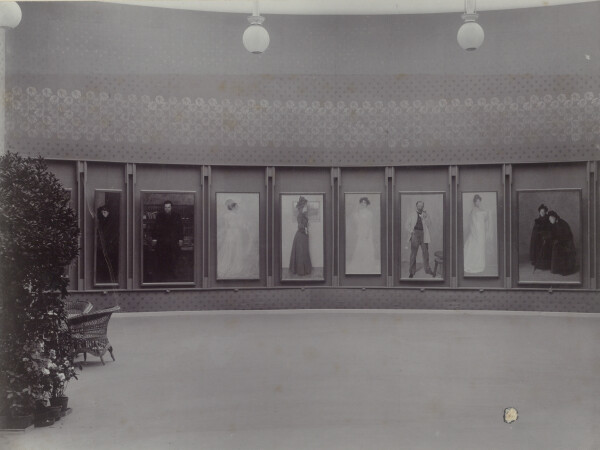
Insight into the Xth Secession Exhibition, March 1901 - May 1901, Österreichische Nationalbibliothek, Bildarchiv und Grafiksammlung
© Picture Archives and Graphics Department, Austrian National Library
The German art and theater critic, author and journalist worked predominantly as an art journalist in Berlin and Vienna for some of the most important and progressive newspapers and periodicals of the fin-de-siècle.
Franz Theodor Hubert Servaes was born on 17 July 1862, the son of a physician in Cologne, where he attended high school. From 1881, he studied art history and German philology at the universities of Tübingen, Leipzig and Strasbourg, and graduated with a doctoral degree in 1887. In Berlin, he got in touch with literary and art circles, and began his work as a journalist for various periodicals, sometimes writing under the pseudonyms Max Haese or Albrecht Schütze. He worked for the journals Jugend, Deutsche Literaturzeitung, Gegenwart and Nation and, thanks to a recommendation from the writer Theodor Fontane, received a position as a theater critic for the newspaper Vossische Zeitung.
Franz Servaes’ Time in Vienna
Writing for the Austrian magazine Waage, Servaes established first contacts in Vienna. By the agency of Hermann Bahr, he worked from 1899 as an arts editor and feuilletonist for the Neue Freie Presse, which in 1900, sent him to Paris as a correspondent to cover the World’s Fair. Karl Kraus critically observed and commented on his work. After Theodor Herzl’s sudden death, Servaes took over as editor of the Neue Freie Presse’s feuilleton in 1904. He reported on current events in the art world, including the exhibitions of the Vienna Secession. On 19 March 1901, he published an article on the “X. Ausstellung der Vereinigung bildender Künstler Österreichs Secession” [“10th Exhibition of the Association of Austrian Artists Secession”], in which he gave a detailed description of Klimt’s paintings – including the second Faculty Painting Medicine (1900–1907, destroyed in a fire at Immendorf Castle in 1945), which was presented for the first time:
“You have to struggle through this new exhibit at little before you reach the Eldorado of the loftiest enjoyment of art. But then, when you enter the main hall, you will likely stop in your tracks, spellbound, for you come under fire from two sides. Over there, you see a shimmering surge of naked figures with a lot of gold and bold colors – Klimt’s new ceiling painting – and right next to it, you encounter a slight arc, running along the back wall, a merry collection of modern portraits, mostly charming young ladies and girls in white or black. Where to turn first? The new Klimt is, of course, the ‘hit’ of the exhibition, which everyone has to see, which everyone must be able to talk about, whether they love or hate it.”
In June 1908, Servaes visited the groundbreaking exhibition “Kunstschau Wien,” which he reviewed for the Berlin newspaper Der Tag and the journal Kind und Kunst. At the same time, he gifted Gustav Klimt a copy with a handwritten dedication of his latest book on Vienna, published as the eighth volume of the series Stätten der Kultur [Cultural Sites]. In a letter, Klimt thanked Servaes for the book and “keen interest in my exhibition.”
Servaes was also successful as a playwright, for instance with his Kleist drama Der neue Tag (which premiered in 1904), published novels, including Jahr der Wandlung (1935), and several biographies of artists such as Giovanni Segantini, Rembrandt and Max Klinger.
With his wife Martha Haese, Servaes had a turbulent relationship: They married in 1893, divorced in 1897, before remarrying in 1899. The couple bought a house with a garden in Weidlingau in the Vienna Woods in 1910, and had three children, Dagmar (Dagny), Roderich and Beate.
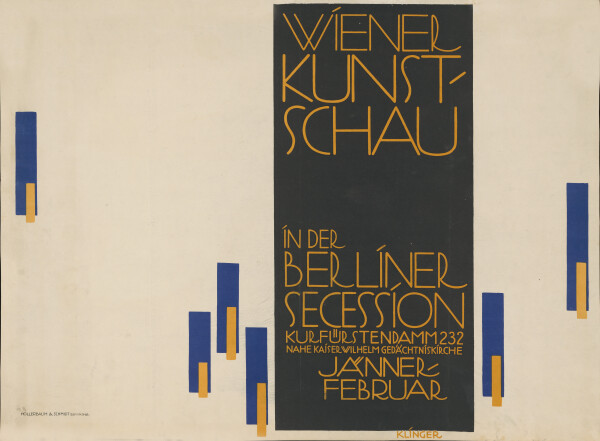
Julius Klinger: Poster of the Vienna Art Show in Berlin Association, 1916,
© Staatliche Museen zu Berlin, Kunstbibliothek
Return to Berlin
Following the outbreak of World War I, the editorial office of the newspaper Neue Freie Presse dismissed many employees, and Franz Servaes moved back to Berlin in October 1914. There, he worked for the publications Berliner Lokal-Anzeiger and Der Tag. In 1916, he reported in Deutsche Kunst und Dekoration about the exhibition “Wiener Kunstschau in der Berliner Secession” [“Vienna Kunstschau at the Berlin Secession”] which Klimt, as president of the Austrian Artists’ League had organized at the invitation of the Berlin Secession. After Gustav Klimt’s death in 1918, he authored a twelve-page essay with numerous illustrations on the painter and his oeuvre.
Servaes' wife Martha died in March 1923, aged 52, prompting him to publish the memoir Anima Candida. Dem Andenken einer teuren Toten in the Neue Freie Presse. The following year, he married his second wife Tilly Stiefel, and lived in Germany until his retirement from professional life in 1932.
Servaes moved back to Vienna as a widower in 1940 to live with his daughter Dagmar, a successful actress known as “Dagny Servaes.” Franz Servaes died on 14 July 1947.
Literature and sources
- Österreichisches Biographisches Lexikon. Franz Servaes. www.biographien.ac.at/oebl_12/193.pdf (06/04/2020).
- Markus Kristan: Kunstschau Wien 1908, Vienna 2016, S. 229.
- Brief von Gustav Klimt an Franz Servaes (presumably June 1908). Autogr. 1253/28-1, .
- Franz Servaes: Gustav Klimt, in: Velhagen & Klasings Monatshefte, 32. Jg., Heft 9 (1918), S. 21-32.
- Otto Wichtl: Leben und Werk von Franz Servaes (1862–1947), in: Verein für Geschichte der Stadt Wien (Hg.): Wiener Geschichtsblätter, 39. Jg., Heft 1, Vienna 1984, S. 13-19.
- Franz Servaes: Secession. Eine Porträtgalerie. Gustav Klimt, in: Neue Freie Presse, 19.03.1901, S. 1-3.
- Franz Servaes: Wiener Kunstschau in Berlin, in: Deutsche Kunst und Dekoration, Band 38 (1916), S. 41-54.
- N. N.: Todesfälle, in: Neue Freie Presse, 25.03.1923, S. 9.
- Franz Servaes: Anima Candida. Dem Andenken einer teuren Toten, in: Neue Freie Presse, 09.04.1923, S. 1-3.
- N. N.: Kunstspiegel. Franz Servaes ist tot, in: Die Weltpresse, 17.07.1947, S. 3.
- N. N.: Familiennachrichten, in: Neue Freie Presse, 11.12.1924, S. 6.
- N. N.: Franz Servaes, in: Felix Czeike (Hg.): Historisches Lexikon Wien, Band 5, Vienna 1997, S. 206-207.
- Widmung von Franz Servaes an Gustav Klimt in seinem Buch: „Stätten der Kultur. Wien“ (June 1908). B225.


